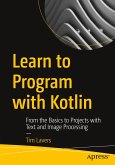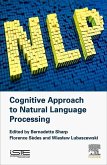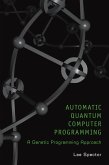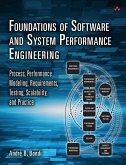Whether you want to become a professional programmer or not, you can benefit from programming skills -- and once you get started, you just might want to enter this growing field after all. Don't be intimidated by programming: Learning to Program will help you master the basic concepts even if you have absolutely no experience… even if you've found yourself confused by other "beginning programming" books!
Author Steven Foote never learned programming in school: he taught himself, figuring out the best ways to understand each concept and overcome each obstacle. Now a full-time professional web developer, Foote helps you follow in his footsteps. He talks to you where you are, assuming no technical background at all. He guides you through all the fundamentals, teaching ideas you can use no matter what modern programming language you choose later, or which devices you'd like to program for.
You'll learn how to organize a program, access and store data, control program flow, test and debug your code, and reuse code so you needn't create it again from scratch. Foote clearly introduces key concepts such as variables, operators, file I/O, pointers, arrays, and functions -- all at a careful pace that's perfect for non-programmers. Each chapter is illustrated with a short hands-on project showing you how to build a simple, useful extension for the Google Chrome web browser. You'll be surprised how easy it is to accomplish real programming tasks -- and, like Foote himself, you may well be inspired to go a whole lot further.
Product Description
Everyone can benefit from basic programming skills–and after you start, you just might want to go a whole lot further.
Author Steven Foote taught himself to program, figuring out the best ways to overcome every obstacle. Now a professional web developer, he’ll help you follow in his footsteps. He teaches concepts you can use with any modern programming language, whether you want to program computers, smartphones, tablets, or even robots.
Learning to Program will help you build a solid foundation in programming that can prepare you to achieve just about any programming goal. Whether you want to become a professional software programmer, or you want to learn how to more effectively communicate with programmers, or you are just curious about how programming works, this book is a great first step in helping to get you there.
Learning to Program will help you get started even if you aren’t sure where to begin.
• Learn how to simplify and automate many programming tasks
• Handle different types of data in your programs
• Use regular expressions to find and work with patterns
• Write programs that can decide what to do, and when to do it
• Use functions to write clean, well-organized code
• Create programs others can easily understand and improve
• Test and debug software to make it reliable
• Work as part of a programming team
• Learn the next steps to take to build a lifetime of programming skills
Features + Benefits
Teaches ideas and techniques that can be used in practically any modern programming language
Demystifies program organization, accessing and storing data, controlling program flow, testing, debugging, reusing code, and much more
Illustrated with easy, brief hands-on projects for building simple, useful Chrome extensions
Introduction Why I Wrote This Book 1
Why You Should Read This Book 3
Your Project 3
1 “Hello, World!” Writing Your First Program 5
Choose a Text Editor 5
Core Features 6
Making Your Choice 8
Sublime Text 9
TextMate 9
Notepad++ 9
Gedit 9
Vim 10
Eclipse 10
IntelliJ 11
Xcode 11
Visual Studio 11
Create a Project Directory 12
Start Small: Create a Test File 12
How HTML and JavaScript Work Together in a Browser 13
The Value of Small Changes 15
Build on Your Success 17
Reference Your JavaScript in manifest.json 20
Let It Run! 20
Great Power, Great Responsibility 21
Summing Up 21
2 How Software Works 23
What Is “Software”? 23
Software Life Cycle 24
Source Code—Where It All Starts 25
A Set of Instructions 25
Programming Languages 26
From Source Code to 0’s and 1’s 31
Compiled vs. Interpreted Languages: When Does the Source Code Become Binary? 31
Runtime Environment 32
Execution by the Processor 34
Input and Output 34
Making Software Useful (and Reusable) with Input 34
Where Does the Input Come From? 35
How the Software Gets the Input 36
Types of Output 36
GIGO: Garbage In, Garbage Out 37
State 38
Add State to Kittenbook 39
Memory and Variables 41
Variables 41
Variable Storage 42
A Finite Resource 44
Memory Leaks 44
Summing Up 45
3 Getting to Know Your Computer 47
Your Computer Is Stupid 47
Your Computer Is Magic 48
Standing on the Shoulders of Giants 48
Computer Guts 48
Processor 48
Short-Term Memory 49
Long-Term Memory 49
Using Your Computer 50
The File System 50
The Command Line: Take Control 52
Summing Up 62
4 Build Tools 63
Automate (Almost) Everything 63
Install Node 64
Install Grunt 66
Software That Helps You Create Software 69
Avoid Mistakes 70
Work Faster 70
Tasks to Automate 70
Compile 71
Test 71
Package 72
Deploy 72
Build Your Own Build 72
Gruntfile.js 73
Use Grunt Plug-ins 73
Load Grunt Plug-ins 76
Register Tasks 76
Watch This! 78
Summing Up 80
5 Data (Types), Data (Structures), Data(bases) 83
Data Types 83
Why Different Data Types Exist 84
Primitive Data Types 84
Composite Data Types 89
Dynamically and Statically Typed Languages 96
Data Structures 96
Set 99
Stack 99
Tree 100
Graph 101
How to Choose an Effective Data Structure 104
Databases 104
Long-Term (Persistent) Storage 104
Relational Databases 104
A Brief Introduction to SQL 106
Summing Up 107
6 Regular Expressions 109
Ctrl+F on Steroids: Looking for Patterns 109
Using Regular Expressions in JavaScript 110
Repetition 111
? 111
+ 111
* 112
Special Characters and Escaping 112
{1,10}: Make Your Own Super Powers 113
Match Anything, Period 113
Don’t Be Greedy 114
Understanding Brackets from [A-Za-z] 115
Lists of Characters 115
Ranges 115
Negation 116
A Pattern for Phone Numbers 116
I Need My \s 119
Shortcuts for Brackets 119
Limitations 121
Capture the Tag 124
Advanced Find and Replace 125
The Beginning and the End (of a Line) 126
Flags 126
Global 126
Ignore Case 126
Multiline 127
When Will You Ever Use Regex? 127
grep 127
Code Refactoring 127
Validation 128
Data Extraction 128
Summing Up 129
7 if, for, while, and When 131
Operators 131
Comparison Operators 131
Logical Operators 132
Unary Operators 134
Binary Operators 134
Ternary Operators 136
“Truthy” and “Falsy” 139
“Syntactic Sugar” 140
Looping Through an Array 142
Looping Through Images 142
Nested Loops 143
You Need a Break 143
Infinite Loops 145
Take Another Break 146
When You Don’t Know When to Stop 146
When 147
Events 147
Listeners 147
Cron Jobs 148
Timeouts 149
Catch When Things Go Wrong 150
Writing Robust Code 151
Summing Up 151
8 Functions and Methods 153
Function Structure 153
Definition 154
Invocation 154
Arguments 155
Call Stack 157
Code Encapsulation 158
Do One Thing Well 158
Divide and Conquer 159
A Place for Everything and Everything in Its Place 162
Code Reuse 163
Solve the General Problem 163
Do More with Less 163
Don’t Repeat Yourself (DRY) 165
Scope 166
Global 167
Local 168
How Variable Lookups Happen 168
Summing Up 171
9 Programming Standards 173
Coding Conventions 173
Setting Standards 174
To Hack or Not to Hack 174
Pay Now or Pay Later 175
Writing Maintainable Code 175
Code Formatting 176
Keep It Consistent 177
Whitespace 178
It Doesn’t Happen on Its Own: Make Rules 178
Using the Work of Others 180
Build Faster 180
Open Source Software 181
Built by the Community 181
When to Build It Yourself 182
Best Practices 182
Documentation 182
Planning 183
Testing 183
Summing Up 183
10 Documentation 185
Document Intentions 186
Self-Documenting Code 187
Don’t Document the Obvious 189
The Danger of Outdated Documentation 190
Find Bugs Using Documentation 191
Document for Yourself 191
How Good Is Your Memory? 191
Document to Learn 192
Documentation Beyond Comments 192
Document for Others 196
Document Your Decisions 196
Document Your Resources 197
Document to Teach 197
Summing Up 198
11 Planning 199
Think Before You Build 199
Create a Specification 200
Design an Architecture 200
Draw Diagrams 201
Try to Break Your System 202
Iterative Planning 203
Design for Extensibility 203
What Are Your Priorities? 204
User Experience 204
Performance 204
Security 205
Scalability 205
Deadlines 205
The Balancing Act 206
Identify and Create Constraints 206
Know What You Can and Can’t Do 206
Summing Up 207
12 Testing and Debugging 209
Manual Testing 2
Learning to Program will help students build a solid foundation in programming that can prepare them to achieve just about any programming goal. Whether they want to become a professional software programmer, learn how to more effectively communicate with programmers, or are just curious about how programming works, this book is a great first step in helping to get there.
Author Steven Foote never learned programming in school: he taught himself, figuring out the best ways to understand each concept and overcome each obstacle. Now a full-time professional web developer, Foote helps you follow in his footsteps. He talks to you where you are, assuming no technical background at all. He guides you through all the fundamentals, teaching ideas you can use no matter what modern programming language you choose later, or which devices you'd like to program for.
You'll learn how to organize a program, access and store data, control program flow, test and debug your code, and reuse code so you needn't create it again from scratch. Foote clearly introduces key concepts such as variables, operators, file I/O, pointers, arrays, and functions -- all at a careful pace that's perfect for non-programmers. Each chapter is illustrated with a short hands-on project showing you how to build a simple, useful extension for the Google Chrome web browser. You'll be surprised how easy it is to accomplish real programming tasks -- and, like Foote himself, you may well be inspired to go a whole lot further.
Product Description
Everyone can benefit from basic programming skills–and after you start, you just might want to go a whole lot further.
Author Steven Foote taught himself to program, figuring out the best ways to overcome every obstacle. Now a professional web developer, he’ll help you follow in his footsteps. He teaches concepts you can use with any modern programming language, whether you want to program computers, smartphones, tablets, or even robots.
Learning to Program will help you build a solid foundation in programming that can prepare you to achieve just about any programming goal. Whether you want to become a professional software programmer, or you want to learn how to more effectively communicate with programmers, or you are just curious about how programming works, this book is a great first step in helping to get you there.
Learning to Program will help you get started even if you aren’t sure where to begin.
• Learn how to simplify and automate many programming tasks
• Handle different types of data in your programs
• Use regular expressions to find and work with patterns
• Write programs that can decide what to do, and when to do it
• Use functions to write clean, well-organized code
• Create programs others can easily understand and improve
• Test and debug software to make it reliable
• Work as part of a programming team
• Learn the next steps to take to build a lifetime of programming skills
Features + Benefits
Teaches ideas and techniques that can be used in practically any modern programming language
Demystifies program organization, accessing and storing data, controlling program flow, testing, debugging, reusing code, and much more
Illustrated with easy, brief hands-on projects for building simple, useful Chrome extensions
Introduction Why I Wrote This Book 1
Why You Should Read This Book 3
Your Project 3
1 “Hello, World!” Writing Your First Program 5
Choose a Text Editor 5
Core Features 6
Making Your Choice 8
Sublime Text 9
TextMate 9
Notepad++ 9
Gedit 9
Vim 10
Eclipse 10
IntelliJ 11
Xcode 11
Visual Studio 11
Create a Project Directory 12
Start Small: Create a Test File 12
How HTML and JavaScript Work Together in a Browser 13
The Value of Small Changes 15
Build on Your Success 17
Reference Your JavaScript in manifest.json 20
Let It Run! 20
Great Power, Great Responsibility 21
Summing Up 21
2 How Software Works 23
What Is “Software”? 23
Software Life Cycle 24
Source Code—Where It All Starts 25
A Set of Instructions 25
Programming Languages 26
From Source Code to 0’s and 1’s 31
Compiled vs. Interpreted Languages: When Does the Source Code Become Binary? 31
Runtime Environment 32
Execution by the Processor 34
Input and Output 34
Making Software Useful (and Reusable) with Input 34
Where Does the Input Come From? 35
How the Software Gets the Input 36
Types of Output 36
GIGO: Garbage In, Garbage Out 37
State 38
Add State to Kittenbook 39
Memory and Variables 41
Variables 41
Variable Storage 42
A Finite Resource 44
Memory Leaks 44
Summing Up 45
3 Getting to Know Your Computer 47
Your Computer Is Stupid 47
Your Computer Is Magic 48
Standing on the Shoulders of Giants 48
Computer Guts 48
Processor 48
Short-Term Memory 49
Long-Term Memory 49
Using Your Computer 50
The File System 50
The Command Line: Take Control 52
Summing Up 62
4 Build Tools 63
Automate (Almost) Everything 63
Install Node 64
Install Grunt 66
Software That Helps You Create Software 69
Avoid Mistakes 70
Work Faster 70
Tasks to Automate 70
Compile 71
Test 71
Package 72
Deploy 72
Build Your Own Build 72
Gruntfile.js 73
Use Grunt Plug-ins 73
Load Grunt Plug-ins 76
Register Tasks 76
Watch This! 78
Summing Up 80
5 Data (Types), Data (Structures), Data(bases) 83
Data Types 83
Why Different Data Types Exist 84
Primitive Data Types 84
Composite Data Types 89
Dynamically and Statically Typed Languages 96
Data Structures 96
Set 99
Stack 99
Tree 100
Graph 101
How to Choose an Effective Data Structure 104
Databases 104
Long-Term (Persistent) Storage 104
Relational Databases 104
A Brief Introduction to SQL 106
Summing Up 107
6 Regular Expressions 109
Ctrl+F on Steroids: Looking for Patterns 109
Using Regular Expressions in JavaScript 110
Repetition 111
? 111
+ 111
* 112
Special Characters and Escaping 112
{1,10}: Make Your Own Super Powers 113
Match Anything, Period 113
Don’t Be Greedy 114
Understanding Brackets from [A-Za-z] 115
Lists of Characters 115
Ranges 115
Negation 116
A Pattern for Phone Numbers 116
I Need My \s 119
Shortcuts for Brackets 119
Limitations 121
Capture the Tag 124
Advanced Find and Replace 125
The Beginning and the End (of a Line) 126
Flags 126
Global 126
Ignore Case 126
Multiline 127
When Will You Ever Use Regex? 127
grep 127
Code Refactoring 127
Validation 128
Data Extraction 128
Summing Up 129
7 if, for, while, and When 131
Operators 131
Comparison Operators 131
Logical Operators 132
Unary Operators 134
Binary Operators 134
Ternary Operators 136
“Truthy” and “Falsy” 139
“Syntactic Sugar” 140
Looping Through an Array 142
Looping Through Images 142
Nested Loops 143
You Need a Break 143
Infinite Loops 145
Take Another Break 146
When You Don’t Know When to Stop 146
When 147
Events 147
Listeners 147
Cron Jobs 148
Timeouts 149
Catch When Things Go Wrong 150
Writing Robust Code 151
Summing Up 151
8 Functions and Methods 153
Function Structure 153
Definition 154
Invocation 154
Arguments 155
Call Stack 157
Code Encapsulation 158
Do One Thing Well 158
Divide and Conquer 159
A Place for Everything and Everything in Its Place 162
Code Reuse 163
Solve the General Problem 163
Do More with Less 163
Don’t Repeat Yourself (DRY) 165
Scope 166
Global 167
Local 168
How Variable Lookups Happen 168
Summing Up 171
9 Programming Standards 173
Coding Conventions 173
Setting Standards 174
To Hack or Not to Hack 174
Pay Now or Pay Later 175
Writing Maintainable Code 175
Code Formatting 176
Keep It Consistent 177
Whitespace 178
It Doesn’t Happen on Its Own: Make Rules 178
Using the Work of Others 180
Build Faster 180
Open Source Software 181
Built by the Community 181
When to Build It Yourself 182
Best Practices 182
Documentation 182
Planning 183
Testing 183
Summing Up 183
10 Documentation 185
Document Intentions 186
Self-Documenting Code 187
Don’t Document the Obvious 189
The Danger of Outdated Documentation 190
Find Bugs Using Documentation 191
Document for Yourself 191
How Good Is Your Memory? 191
Document to Learn 192
Documentation Beyond Comments 192
Document for Others 196
Document Your Decisions 196
Document Your Resources 197
Document to Teach 197
Summing Up 198
11 Planning 199
Think Before You Build 199
Create a Specification 200
Design an Architecture 200
Draw Diagrams 201
Try to Break Your System 202
Iterative Planning 203
Design for Extensibility 203
What Are Your Priorities? 204
User Experience 204
Performance 204
Security 205
Scalability 205
Deadlines 205
The Balancing Act 206
Identify and Create Constraints 206
Know What You Can and Can’t Do 206
Summing Up 207
12 Testing and Debugging 209
Manual Testing 2
Learning to Program will help students build a solid foundation in programming that can prepare them to achieve just about any programming goal. Whether they want to become a professional software programmer, learn how to more effectively communicate with programmers, or are just curious about how programming works, this book is a great first step in helping to get there.








